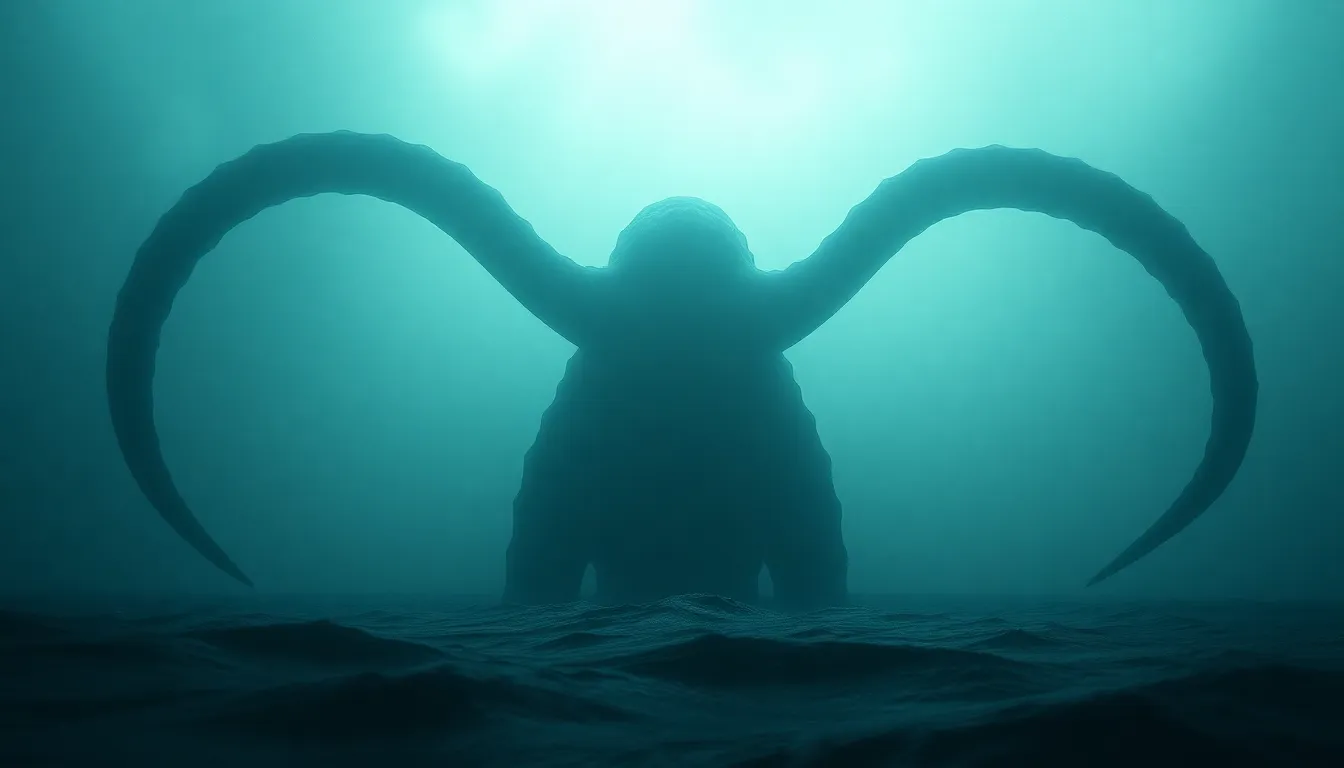The Shadow of the Kraken: Unveiling the Norwegian Sea Monster
I. Introduction
The legend of the Kraken, a colossal sea monster said to dwell off the coasts of Norway and Greenland, has captured the imaginations of many for centuries. This mythical creature, often described as a giant octopus or squid, has become a significant element in maritime folklore, representing the fears and mysteries of the deep ocean.
In maritime culture, the Kraken serves as a cautionary tale and a symbol of the unknown, evoking both awe and terror. The purpose of this article is to delve into the origins, cultural significance, and scientific explanations surrounding the Kraken legend, unraveling the truths and myths that have emerged over time.
II. Historical Origins of the Kraken Myth
The Kraken myth has roots that stretch back to early literature and folklore. One of the earliest mentions can be traced to the 12th century, where descriptions of a monstrous sea creature began to surface in Scandinavian writings.
- Early mentions in literature: The Kraken was first referred to in Francesco Negri’s travelogue in the 17th century, where he described a great beast that could drag entire ships under the waves.
- The Kraken in Scandinavian culture: In Norse mythology, sea monsters were often depicted as formidable foes, with the Kraken embodying the terror of the ocean depths.
- Influence of sailors’ tales: Sailors, who often spent months at sea, contributed to the evolution of the Kraken myth. Their stories of monstrous creatures lurking beneath the waves were fueled by the fear of the unknown and the dangers of the sea.
III. The Kraken in Popular Culture
Over time, the Kraken has evolved into a prominent figure in popular culture, appearing in various forms of literature, art, and entertainment.
- Depictions in literature and art: The Kraken has been featured in works such as Alfred Lord Tennyson’s poem “The Kraken” and illustrated in numerous paintings and engravings, portraying it as a terrifying force of nature.
- The Kraken in modern films and video games: Films like “Pirates of the Caribbean” and games such as “Sea of Thieves” have brought the Kraken to life, adding to its mystique and allure.
- The impact of these portrayals: These adaptations have significantly influenced public perception, transforming the Kraken from a fearsome monster into a more complex symbol of the ocean’s mysteries.
IV. Scientific Explanations Behind the Legend
While the Kraken remains a creature of myth, scientists have sought to uncover the truths behind its legend, exploring the possibility of real-life inspirations.
- Possible real-life creatures: The giant squid (Architeuthis dux) is often cited as a potential basis for the Kraken myth, given its massive size and elusive nature.
- Exploration of giant squid: These fascinating creatures can grow up to 43 feet long and have been observed in their natural habitats, showcasing behaviors that might have inspired sailors’ tales of monstrous sea beasts.
- The role of oceanographic discoveries: Recent advancements in ocean exploration have revealed new species and ecosystems, further expanding our understanding of what might lurk beneath the surface.
V. The Kraken and Its Symbolism
The Kraken serves as a powerful metaphor in various contexts, representing the unknown and humanity’s relationship with nature.
- Metaphor for the unknown: The vast and uncharted waters of the ocean symbolize the mysteries of life and the universe, with the Kraken embodying the fears associated with the unknown.
- Interpretations of fear: The creature can also be seen as a representation of the subconscious fears that arise when facing the unpredictability of the sea.
- Representation of nature’s power: The Kraken highlights the awe-inspiring and sometimes terrifying forces of nature, reminding us of our vulnerability in the face of such power.
VI. Modern Kraken Sightings and Investigations
In recent years, there have been reports of modern Kraken sightings, reigniting interest in the legend.
- Recent reports and eyewitness accounts: Various individuals claim to have encountered giant sea creatures that resemble the Kraken, leading to renewed fascination with the myth.
- Scientific expeditions: Researchers have undertaken expeditions to explore the depths of the ocean, searching for evidence of giant creatures and uncovering new biological phenomena.
- The role of technology: Advancements in technology, such as deep-sea submersibles and underwater drones, have allowed scientists to investigate previously unreachable areas of the ocean, providing new insights into its mysteries.
VII. Cultural Significance and Legacy of the Kraken
The Kraken continues to hold cultural significance, particularly in Norway, where its legend is preserved and celebrated.
- Contemporary Norwegian culture: The Kraken remains a symbol of national pride, with references in literature, art, and even local festivals.
- Preservation of the legend: Tourism and media play a vital role in keeping the Kraken legend alive, attracting visitors eager to learn about the creature and its folklore.
- Ongoing fascination with sea monsters: The Kraken is part of a broader cultural fascination with sea monsters, reflecting humanity’s enduring curiosity about the ocean and its secrets.
VIII. Conclusion
The legend of the Kraken embodies the complex interplay between myth and reality, fear and fascination. Throughout this exploration, we have uncovered the historical origins, cultural significance, and scientific inquiries surrounding this enigmatic creature.
As we delve into the depths of maritime folklore, the Kraken remains a powerful symbol of the unknown, forever embedded in the human imagination. The enduring legacy of the Kraken invites us to continue exploring and questioning the mysteries of the sea and the legends that arise from its depths.




